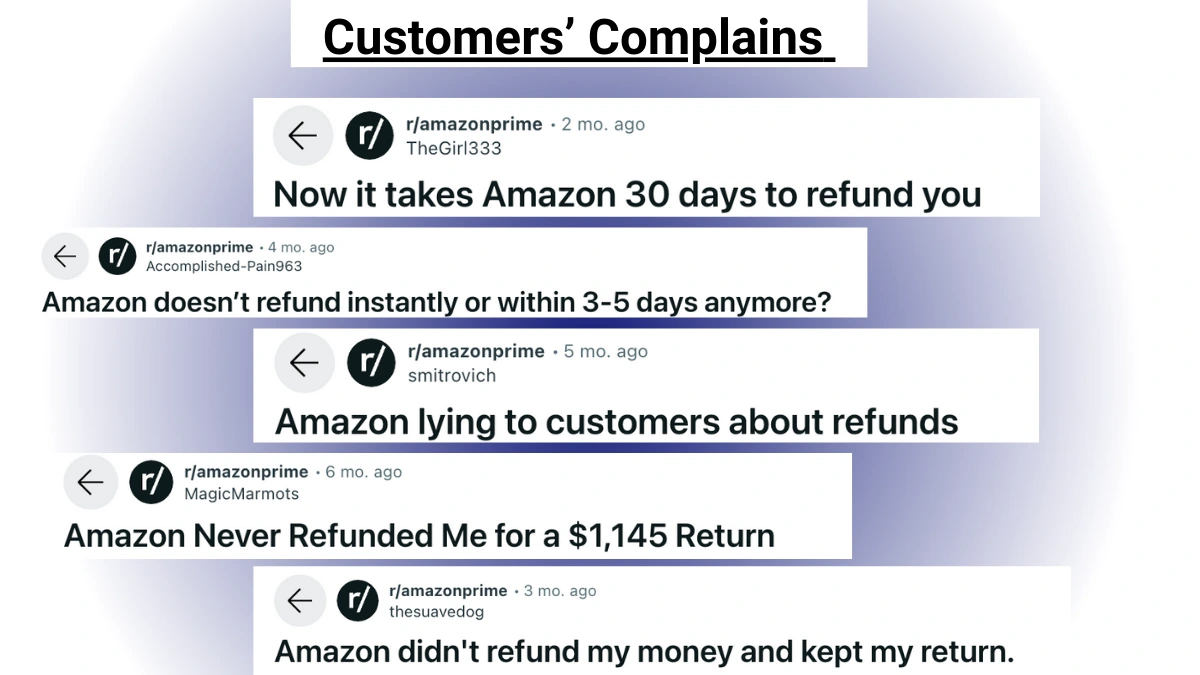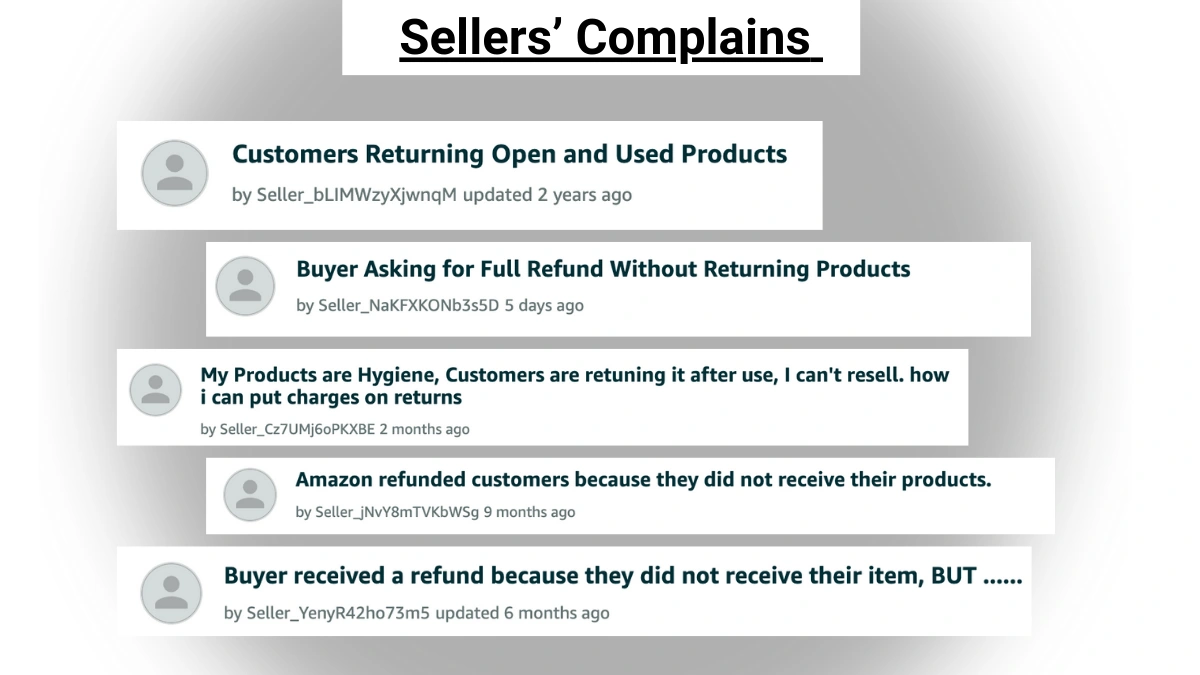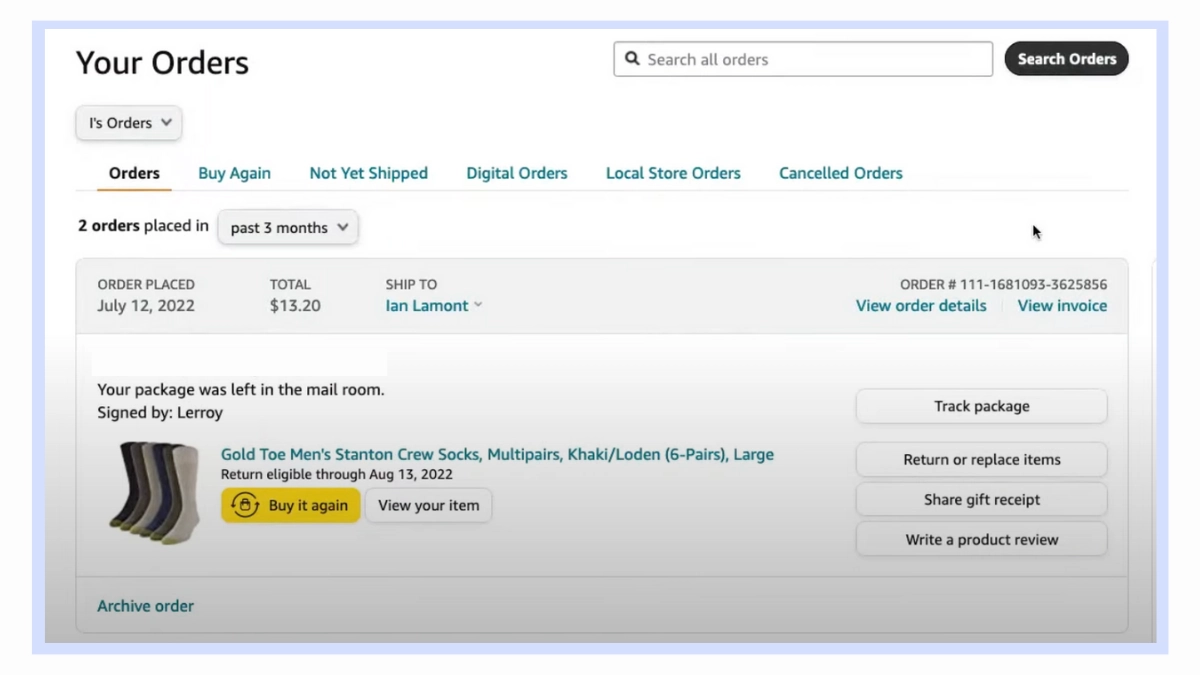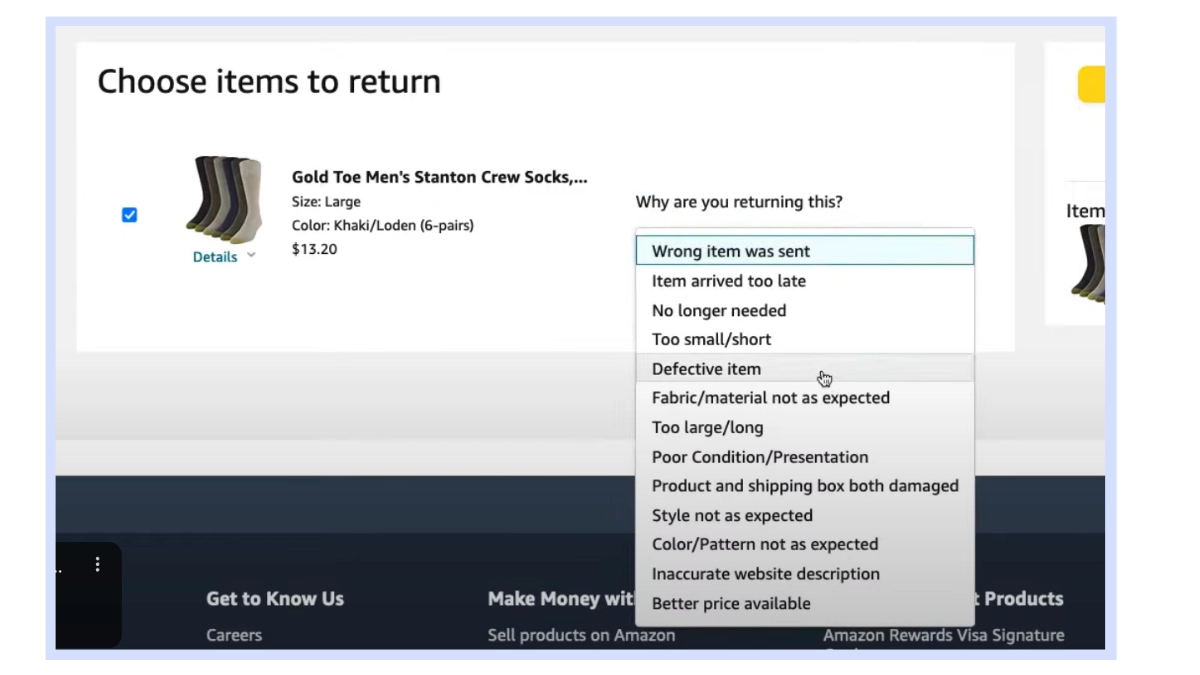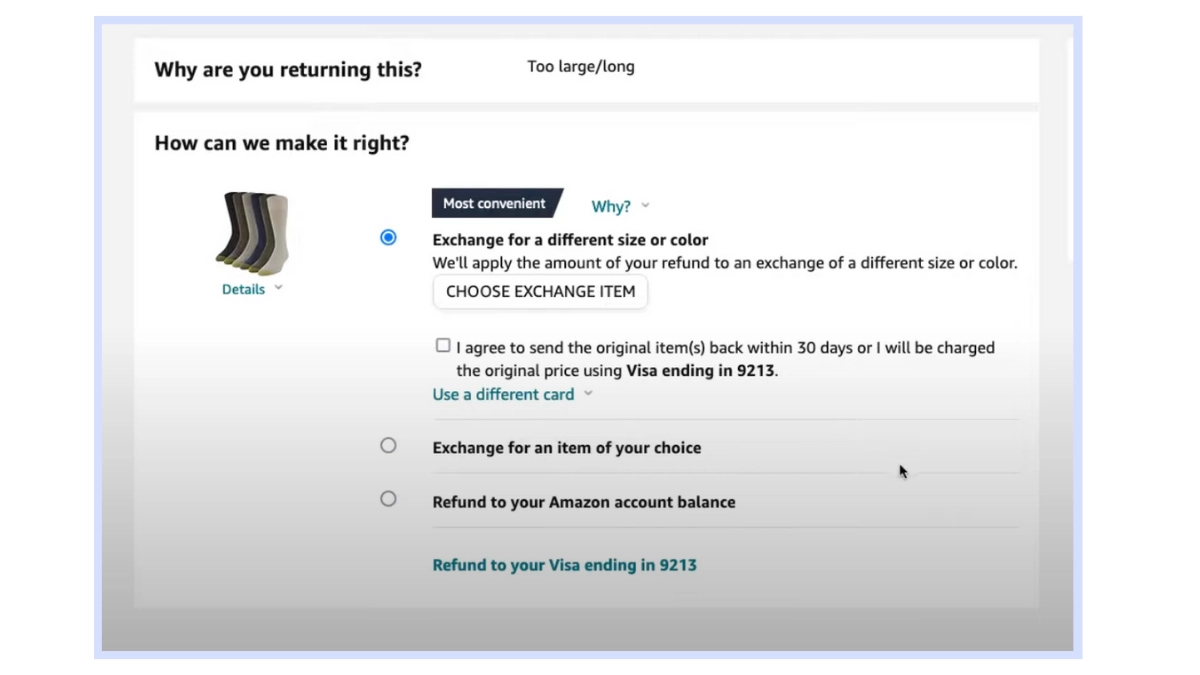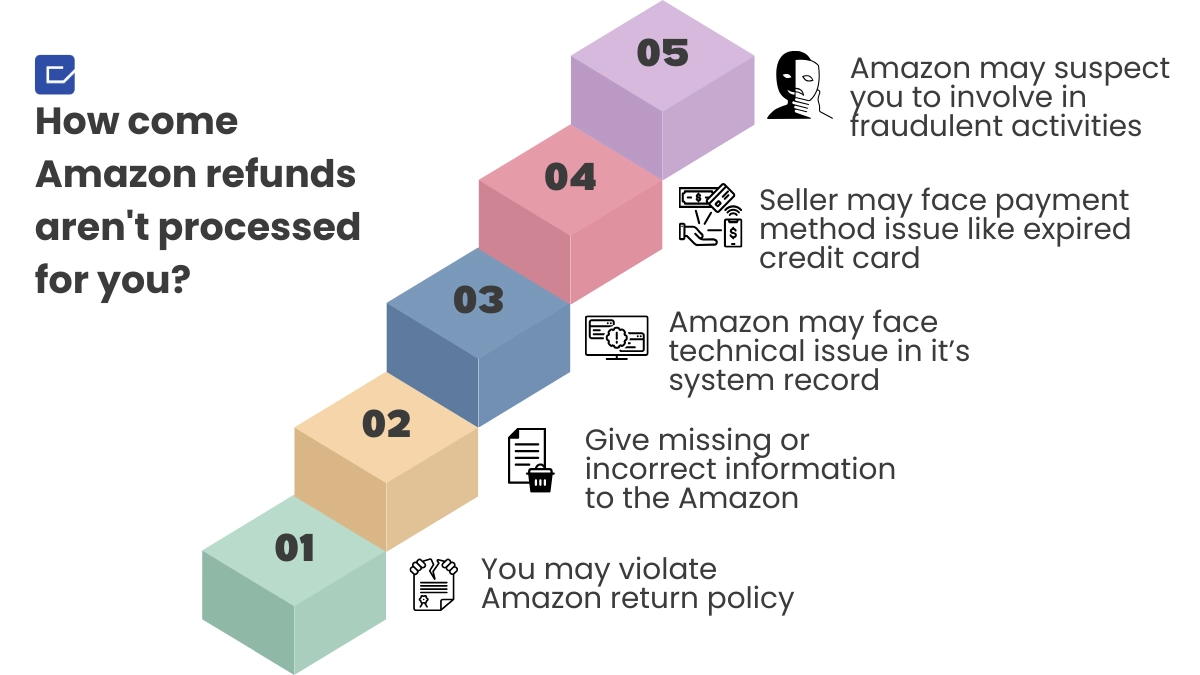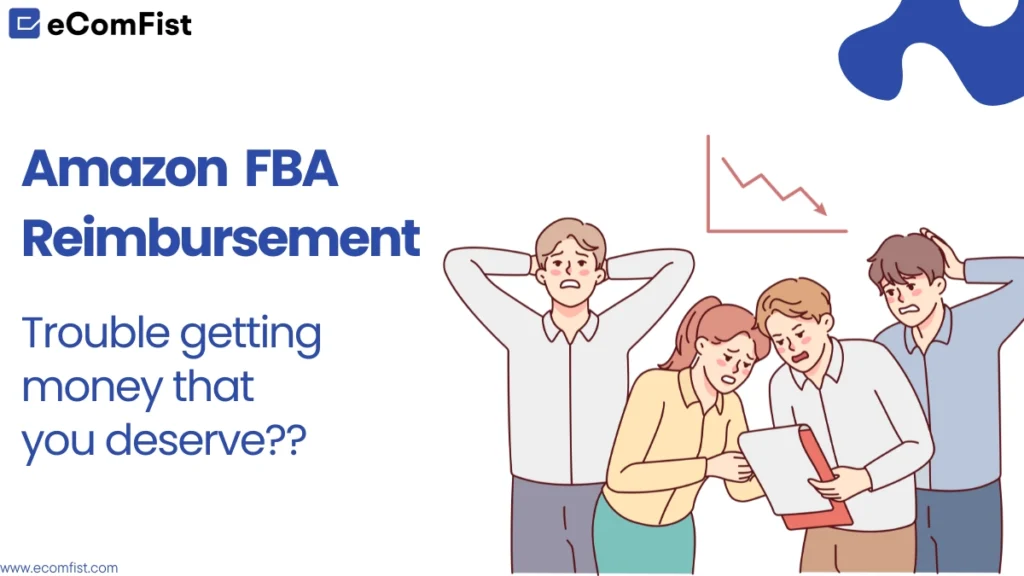Amazon is a shining example of modern comfort! But what if the much-anticipated shipment turns out to be defective or a poorly fitted item—definitely not what you were hoping for? Of course, you want your money back, don’t you? However, calm down! Have you ever requested a refund on Amazon and received a heartbreaking “No”?
Customers’ hopes of receiving a refund are crushed, and the story goes on. But come on: Amazon isn’t like Trick-or-Treaters when it comes to refunds. Oh no, they’re really rule-oriented. And you might as well say farewell to your refund if you dared to deviate from the straight and narrow road… Amazon return and order policies.
There is a solution.
If you play by the rules and make sure everything is in order, you may have a shot at getting that dreaded Amazon refund. Let’s seek out different real-life cases where customers haven’t gotten refunds and explore this topic in detail.
What do customers experience with Amazon refunds?
Let’s give the answer to this question from two perspectives: customers vs. sellers.
One perspective of customers
Customers face many refund obstacles. Challenges include a lack of refunds, conflicts over defective goods, missed shipments, delayed delivery, and waiting longer than the stated 3-5 days for Amazon FBA refunds.
Imagine ordering 20–30 Amazon items monthly and having refund troubles with even a few. The annoyance peaks. Therefore, Reddit, Quora, and other platforms echo such complaints from disappointed customers.
The alternative perspective of sellers
Let’s talk about the difficulties faced by third-party sellers when dealing with customer complaints regarding Amazon refund requests. Amazon typically refunds customers without ever receiving the returned products, resulting in daily losses for sellers. Another common issue is when buyers frequently utilize the items and then falsely request a refund. One customer even went so far as to express gratitude to the Amazon seller for giving him an Amazon refund, but he also mentioned that his neighbors were stealing his Amazon packages.
Ah, the tangled web of Amazon refunds! . Oh no, it’s more than just a customer problem. Even Amazon sellers are caught up in the chaos. It’s a full-scale battleground, folks—a heated fight between sellers and buyers, with Amazon serving as referee and trying to bring order to this unstable retail playground.
So, there is a need to talk about it step by step: how can customers get Amazon refunds effectively?
Amazon’s order and return policy
Here is Amazon’s order and return policy. They claim it’s easy, but customers compare it to a jungle trip in the Amazon. It’s in the fine print, but you have 30 days to start the return process.
Amazon carefully examines your returned item once you’ve completed the return process and sent it back. That reimbursement is currently on Amazon time, so don’t get your hopes up because now it’s become the matter of third-party sellers as well. This is where Amazon takes most of the time.
And we must not overlook the exceptions. There is a different set of return policies for electronics, perishables, and items sold by third party sellers. That’s why, before ordering anything from the product listings, focus on the return policy as well.
Why might you seek a refund on Amazon?
You may request a refund on Amazon for various reasons, including:
- Defective or Damaged Items: You have the right to get their money back or get a new one if an item is flawed or arrives damaged.
- Received the Wrong Item: You have the option to request a refund or exchange if the item you receive does not match your order.
- Late Delivery: You have the right to ask for a refund if your items do not arrive within the specified time frame, particularly if those items are time-sensitive.
- Change of Mind: Even if there is no defect with the product, Amazon will still give you your money back if you return it in its original packaging within a certain amount of time.
- Order Cancellation: You have the option to request a refund on Amazon if you choose to cancel your order prior to shipment.
- Low-Quality Product: You have the right to demand an Amazon refund if the product’s quality falls short of your expectations.
- Expense Mistakes: Customers have the right to seek a refund in the event that they are overcharged due to billing errors.
These are just a few reasons. Keep in mind that refund policies might differ from one product to another and from one transaction to another.
Types of Amazon refunds you can get
Ah, navigating Amazon refunds can feel like a bit of a mixed bag, can’t it? Essentially, there are just two outcomes: either you receive the whole amount or a portion of it. On the other hand, you’re out of luck if you see no cash for Amazon refunds coming back.
Moreover, sellers on Amazon also take a major financial hit when customers request refunds. It’s worth noting that for Amazon sellers, refunds can sometimes be a tough pill to swallow, especially if they’re dealing with tight profit margins or just starting out with their own product lines. So, whether you’re celebrating a full refund or making peace with a partial one, it’s all part of the e-commerce adventure, isn’t it? To return to our original topic, there are two distinct refund options:
1. Full Refunds on Amazon
Everything you paid for, including shipping, is covered. You can expect full refunds in the following cases:
- What you got is very different from what was described in product listings.
- The product has defects or is in a damaged state.
- Within the given return window, you send back the item in its unused condition.
2. Partial Refunds
You will receive a 50% or less refund in this case. You can expect partial refunds in the following cases:
- An order that contains many items can only have a portion of those items returned.
- Parts are missing, the item is in bad condition, or it has been used.
- After obtaining the item, you either used it or damaged it.
Thus, whether you get a complete refund or a partial one is dependent on the circumstances. So, on the basis of conditions, these two types of refunds are further divided into returnless refunds, prepaid label refunds, gift card refunds, damaged or defective item refunds, subscription refunds, etc.
How to request refunds on Amazon?
Your initial step in getting a refund on Amazon should be to contact the third-party seller. Why? The good news is that, in most cases, returning an item to Amazon is unnecessary due to a defective or wrong item. The cost of returning items may mount up fast, and guess who ends up footing the bill? Of course, someone like you.
Regardless of whether you are compelled to send it back or not, the seller still has to handle processing, packing, and trying to resell the product. That’s the hardest part. So sometimes, they might just agree to give you a refund without bothering to take the item back.
So, following are the steps by which you can request a refund on Amazon:
- Access your orders.
- Find the purchase.
- Choose the issue with the order.
- Use the drop-down menu to choose your issue.
- Find the option to request a refund.
- Use the text box to enter your comments.
- Amazon will provide you with a variety of alternatives when you request a refund. Pick them if you’d rather have the item than a refund.
- Press the Submit button.
How do I get Amazon late delivery refund?
Amazon will give you a refund on late deliveries if you meet the following Amazon requirements:
- Shipping of your order to a registered address is required.
- The delivery option chosen needs to be the same as the one listed on the product page.
- Your delivery option must specify a confirmed delivery date for the products on your order. Moreover, it should be Amazon that delivers the order, not the seller.
- After placing your order, make sure your payment method is charged successfully.
If you fulfill this criteria for an Amazon late delivery refund and have already requested a refund on Amazon after 48 hours of the due date, then follow the following steps:
- Contact customer service and explain your problem. Ask whether your request has been processed or not.
- If the initial customer representative fails to handle your issue, escalate your problem and ask to speak with a higher-up or another customer service representative.
- Continue to follow up with them.
Because Amazon has policies in place to make purchasing with the company as easy as possible, they are likely to consider your request for a refund. But if your refund still hasn’t gone through, check out “Why aren’t Amazon refunds being processed for customers?”
How do I get an Amazon lost package refund?
Amazon refunding for a lost package follows the same steps as refunding for a late delivery. You’ll need to select the “lost package” issue under the refund problem section. That’s all. Additionally, you should politely inform customer service of your problem regarding the lost item and expect a solution. Pay close attention to their instructions and make a record of any communication.
How long do Amazon refunds take?
It usually takes anywhere from 5–51 days from the moment you send the item back to Amazon. There are three processes that must be completed before you can expect to see a refund: shipping, Amazon processing, and payment processing.
| Types of Refunds | Number of Days |
| Immediate Refunds | Instant or 1-2 business days |
| Credit/Debit Card Refunds | 8–28 business days |
| Amazon Store Credit | Instant |
| Bank Account Refunds (ACH) | 8–30 business days |
| Gift Card Refunds | 2–21 business days |
| Check Refunds | 10–14 business days |
Also, keep in mind that Amazon has a huge customer base. Amazon needs to look into the issue further, on top of the processing or shipment procedure. Thus, it’s possible that two more weeks will be required.
So, if the problem is readily apparent, Amazon will give you your money back within the specified time. In any other case, you may have to wait a month for a refund.
Why aren’t Amazon refunds being processed for customers?
The primary goal of Amazon’s return policy is customer satisfaction, even if it means sellers might lose out. However, it takes a lawyer to fully grasp those rules. By the way, I have explained it in simple terms above.
In previous years, Amazon would always take the customer’s side when they requested a refund; therefore, there weren’t many issues with refund requests. On the other hand, this proved troublesome for sellers, as buyers may return products or keep requesting refunds for items they actually received and make fabricated stories to customer service. So, Amazon chose to be a little stricter with the guidelines in order to help sellers more.
Amazon refunds may not be processed for customers due to various reasons. These could include:
1. Return Policy Violations
Amazon has the right to refuse refunds to customers who return items that do not fulfill the return policy’s requirements, such as those that are returned after the required time has passed or that do not meet the defined conditions.
For example, a customer intends to send back an electrical item after the 30-day return period has ended, but that’s not possible according to Amazon’s policy. Here, Amazon has the option to reject the Amazon refund request.
2. Missing or Incorrect Information
Customers could see their refunds delayed or even canceled if they provided inaccurate or missing information when submitting a return.
For example, the customer starts the return process but forgets to add the Amazon-issued return authorization code. You will not be able to process the return or get your money back unless you supply this code.
3. Technical Issues
Delays or problems in refund processing may occur from time to time due to technical issues or mistakes in Amazon’s system.
For example, the refund procedure is put on hold because of a technical issue with Amazon’s website, which prevents the customer’s return request from being correctly recorded.
4. Payment Method Issues
Usually, when you get a refund, it will go back to the payment method. There may be problems with the refund process if the payment method is not valid.
For example, a customer wants their money back since they used an expired credit card to make a purchase. Amazon will not be able to process the refund unless the customer either provides a new payment method or updates their old one. Sometimes, Amazon rejects the refund request.
5. Fraudulent Activity
Amazon reserves the right to delay or cancel refunds in the event that they suspect fraudulent actions, such as exaggerated claims of non-receipt or abuse of the return policy.
For example: The customer keeps claiming that they have not gotten the items, even though the tracking information shows that they have been delivered. Amazon learns through its investigation that the customer has a history of dishonest actions, such as asking for refunds for products they have really received. If this happens, Amazon can temporarily deactivate the customer’s account and reject refunds that are due.
If you peruse Reddit or other forums where most Amazon customers post their refund issue situations, you’ll notice that there’s always a policy violation. Do you think Amazon should pay if your neighbors keep stealing your deliveries, even if Amazon sent you an email confirming the package’s arrival?
Furthermore, I’m not denying that Amazon is always right. There could be cases when you meet the refund requirements and Amazon is unable to return the money. To sum up, Amazon is persistent in its efforts to level the playing field for both customers and sellers.
The bottom line
The Amazon refund policy is lengthy and complex. Amazon tries to follow its policy in every refund transaction. You shouldn’t ever have any trouble receiving your money refunded; just make sure you ask for a refund only when it’s reasonable and according to the policy.
Otherwise, an important skill for any Amazon seller to have is the ability to request a refund. You may feel overwhelmed by the procedure, and that’s OK. On the other hand, knowing the ins and outs of refunds ahead of time allows for easier transactions, which leads to stellar customer service.
Are you still confused about how to handle Amazon refunds for your customers? Rely on us for assistance. We are happy to address any questions you may have. going to schedule a call?
Related Posts
- How and (why to) hire an Amazon marketing agency?
- Why should you consider hiring an Amazon account management service?
- Top tips for selecting the best Amazon consultant to scale your business?
Frequently Asked Questions
How do I contact Amazon customer service?
The following procedures will guide you in contacting Amazon’s customer service chat:
- Visit Amazon and sign in.
- Go to the “Help & Customer Service” section of the menu. This is typically located in the “Your Account” drop-down menu or at the very bottom of the Amazon homepage.
- Go to “Customer Service” or “Contact Us” and click on that.
- To get help with a certain order or problem, choose it.
- Choose the option to have a live conversation with an agent.
- Just follow the on-screen instructions to start chatting with an Amazon representative.
Can Amazon reject my refunds?
Amazon may reject your refund request if the item is not qualified for return, for example, if it is outside of the return window or if it is not in its original condition. Furthermore, they have the right to reject the Amazon refund request if the stated reason for the return does not comply with their policy. One other common reason for rejection is that the item that was received was identical to what had been described by the seller. So, the refund procedure will go more smoothly if you follow Amazon’s return instructions and provide accurate information.
Does Amazon give refunds for late delivery?
Under their delivery guarantee policy, Amazon usually compensates customers for late deliveries. You might be able to get a refund or store credit if your Prime shipment is late. In any case, the specifics of the delay and your geographical area determine how this policy works. If you need help or have questions concerning compensation, it’s best to get in touch with Amazon’s customer support.


